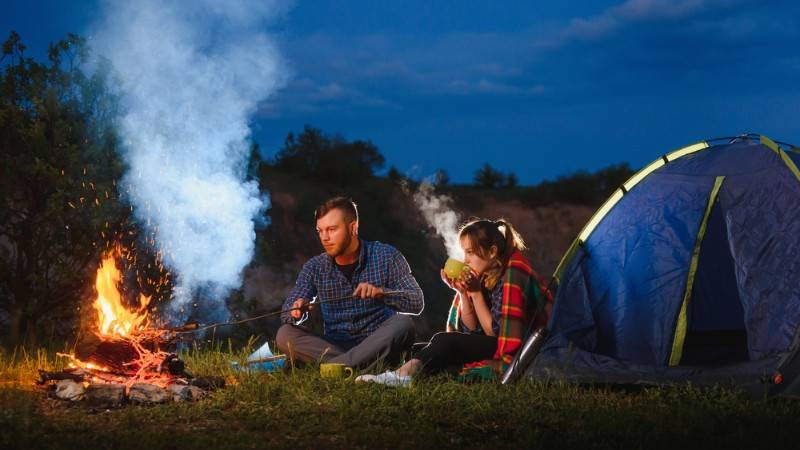As a camper from an early age, I was always inspired by those first campers who pioneered unknown valleys and conquered green mountain peaks.
Those men and women had little but valued what they had.
They camped sustainably without even knowing about the term.
And while I was never able to whittle a wooden fork out of a log, in recent years I’ve started thinking about sustainable camping.
One thing puzzled me:
We haul a lot of stuff up there, only to bring down bagful of trash.
That just feels wrong.
Then I decided to change my camping routine. I borrowed some ideas from old-timers and filled in the rest using the sustainable technology we have today.
Here are my green camping tips.
Buy Used Gear
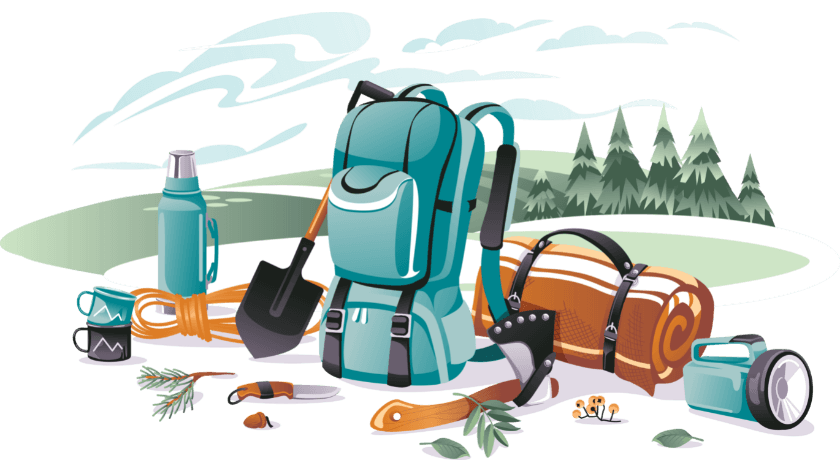
I remember when my colleague told me he was about to start building his camping kit. I can’t remember the price tag of each and every item, but in the end, there was something just above $1,000 to start with. And those were only the basics.
Now let me tell you something a very wise camper told me.
Always buy used!
Your camping gear is going to stay new until you set up the camp. It’s bound to get dirty and roughed up.
Search sites like Craigslist and Freecycle, as well as your local online ads and thrift stores. Shopping second-hand is probably the most eco-friendly way to go shopping.
Unless you’re climbing Mt. Aconcagua, there’s no reason to invest in new camping equipment.
Pro tip: Where I don’t want you to skimp is your base layer. Invest in 100% merino wool shirts and underwear. Merino wool is a sustainable material that keeps you warm yet dry on the move.

Read More:
Pick the Right Tent
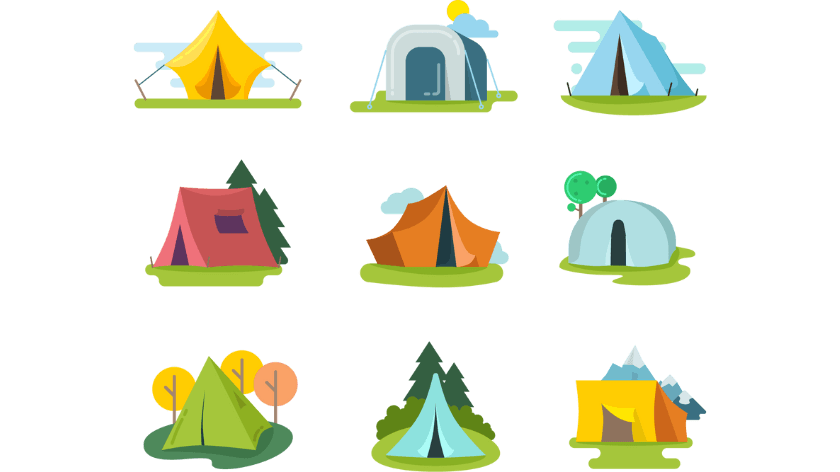
Now I’m all about reusing everything you can, but here I have to make a point. My dad has a tent he bought when he was a teenager.
Let me tell you — that sucker is heavy!
It’s the size of an average backpack when folded and it gets only 2 persons inside.
There’s no way I’d haul that to any campsite.
Materials have changed since then, so my advice is to either get a new-style used one or one made of 100% recycled polyester like this North Face Eco Trail 2-Person Camping Tent.
If you’d like to try something new, check out this WintMing Suspended Tree Tent with a mosquito net and rain fly. A hanging tent is a great choice for campsites where the ground is too rocky or soggy. Since you sleep suspended off the ground, a tent like this makes you safe from creepy crawlies, plus you have a much better view of your surroundings.
Choose Reusable Campware

When you’re out there, you have every reason to apply all the eco-friendly habits you apply at home. The fact that you’re away from your kitchen cabinet doesn’t mean you should splurge a small fortune on single-use plates, cups, cutlery, or napkins.
Instead, opt for an unbreakable but washable version of each. To keep them clean bring a small basin, sponge, and biodegradable soap — more about that coming up.
Also, toss in a breathable bag to store cloth napkins and towels that are too dirty to reuse.
If you absolutely have to use disposable cutlery, make sure it’s biodegradable and compostable, like this Natural Bamboo Utensils Set. You can also feed them to your campfire at the end of the day.
Build a Safe Campfire

Speaking of campfires, this is the one where you need to be extra careful. Roasting marshmallows and telling scary stories is a timeless camping activity.
But let’s keep the monster from the story the scariest thing about the campfire.
So how to prevent your campfire from turning into a wildfire?
- Be aware of any fire restrictions, especially during forest fire season.
- Keep it contained in a fire pit. If you can’t find an old one at your campsite, make your own fire ring using large stones.
- You don’t need a big roaring fire. Keep it small so you can keep it under control. Feed it one log at a time.
- Cooking is OK, but don’t burn food as you may attract unwelcome guests, like the mama bear.
- Put the fire out at least 45 minutes before you leave the site or go to bed. Pour water on the embers and stir the ash to make sure it’s out.
Protect the Wildlife

Keep in mind that your campsite is already home to all kinds of plants, insects, and animals. Any human has an impact on local wildlife so make sure to respect their habitat.
This is especially important at night time. Many forest animals are nocturnal while others are extremely sensitive to light.
Unfortunately, many campers light up their campground with floodlights and torches brighter than the Yankee Stadium!
This kind of behavior disturbs nearby animals and causes unnecessary stress. You should keep a lantern on at your campsite throughout the night, but in reality, when the fire goes out, you don’t need much more than that.
There’s nothing wrong with finding a secluded camping spot away from main tourist routes, but that doesn’t invite you to go offroading in protected environments. Some soils are more vulnerable than others, while others host complex ecosystems.
Ever heard of the Don’t Bust the Crust slogan?
It refers to biological soil crusts — soil ecosystems that cover the topmost layer of soil in many dry places around the world.
You may see colorful flowers but there’s a good chance they are protected. Any trampling or picking will likely get you in trouble with the law.
The same applies to animals. Use your camera or binoculars to admire them from afar and let them be.
DIY Your Snacks and Meals
A big part of green camping is eliminating waste. Let’s start with the food we buy. Try to buy less packed and ready-to-eat items.
Instead, focus on groceries you can buy in bulk, like potatoes, beans, lentils, etc. Pack these in reusable cotton bags and once you get water boiling you can have a tasty meal right there in the middle of the wilderness.
Part of sustainable camping is cutting emissions and driving to the nearest supermarket when the food runs out. Instead, try farmer’s markets or even individual farms where campers are welcome to visit and buy some of the delicious produce.
This is a great way to get fruits, veggies, and even cheese directly from the people who produce them. The in-season food didn’t have to be imported from overseas.
Not only will it taste better, but you’ll be supporting the local economy.
Pro tip: I always love talking to local farmers when I’m camping and road-tripping. These people know the region like the back of their hand and are the best source of insider tips on the best sights to visit. Let me mark this on your map, eh!
Pack Refillable Water Bottles
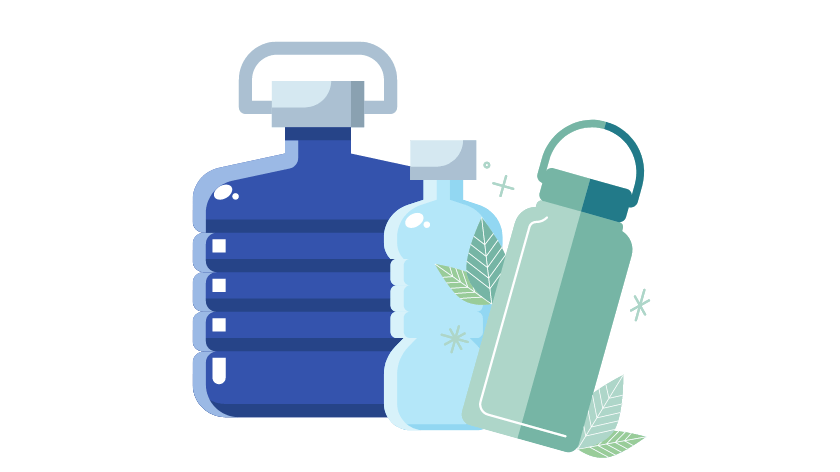
I regularly see people schlepping packs of bottled water along with their camping gear.
Depending on where you pitch your tent, this can even create overhead because some parks don’t have recycling bins but require campers to pick up their trash along with them.
A much better way is to buy a 5-gallon bottle from which you can refill individual reusable bottles during your trip.
This Brio B.P.A. Free 5 Gallon bottle is just the right size for camping. I like to plan my camping trips to include stops at roadside water springs where I fill this big boy up. If not, I use tap water.
For me, it’s pretty much the same for food storage. Leave plastic bags and single-use containers at home and store food in containers that contain no BPA and phthalates.
These chemicals can leak into food when exposed to heat, and at the end of the day, they pose an environmental hazard anyway.
Wash With Biodegradable Soap

So how do you wash the dishes and keep yourself clean without using a detergent or shampoo that can be toxic to natural ecosystems?
I use an all-in-one biodegradable soap to wash my hands, face, hair, clothes, and dishes.
This Concentrated Campsuds Outdoor Soap is one of my favorites. It’s made of all-natural ingredients to be safe for the environment. Plus, it comes in a backpack-friendly size.
This universal green cleaner should be part of everyone’s sustainable campaign gear.
Note: This is a concentrated cleaner. A few drops in water and you’re ready to foam and scrub!
Even if you use an eco-friendly camping soap, it doesn’t mean you can wash directly in lakes and streams. These ecosystems are extremely delicate, and even biodegradable soaps in high concentrations can harm the living creatures.
When you’re done washing, dump the soapy water at least 200 feet from any waterway.
Leave Gadgets at Home
This can be a hard one, but once you manage to decouple from electronic gadgets and social media, you’ll see that you’re not really missing anything. I like to take my green camping trip as a timeout from devices and social media.
Instead of swiping miles and miles of the newsfeed, put on a pair of hiking boots and update yourself with miles of natural scenery and fresh air.
Any gadgets that require batteries will just make your backpack heavier. If you need to inflate an air mattress, use a foot pump.
Do you really need music when you can listen to the sounds of nature?
Nothing like reading a book in a tent on a rainy afternoon!
You should try sometime.
Still, I have to make two exceptions:
- Mobile phone
- At least three light sources — the headlamp, flashlight, and lantern.
If you’ve never been camping you’d be surprised how much darker the countryside is at night.
Before, I used to stock up on AA batteries for every camping trip. Now I use rechargeable batteries and a solar generator with a pair of solar panels to keep my phone on the top charge.
Make Non-toxic Mosquito Repellant
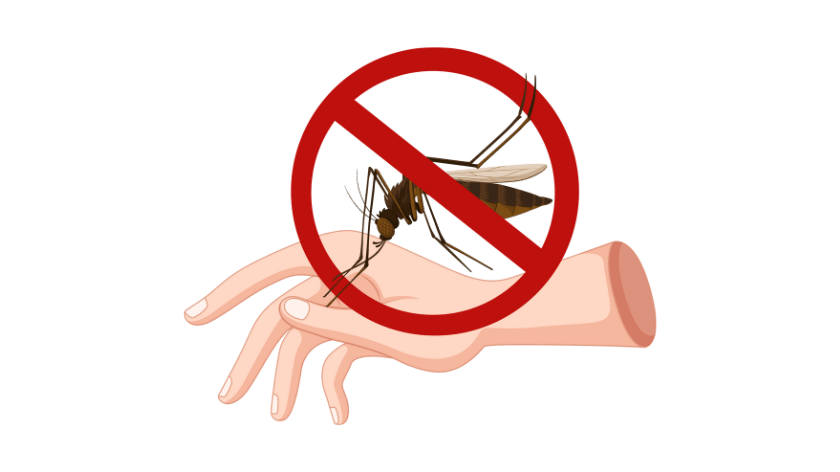
Camping in nature and mosquitos go together like Monica and Chandler. Still, many bug sprays can have negative effects on the surrounding plants and your body.
Let me tell you how to make an all-natural mosquito repellant:
- Take a 4-oz spray bottle and fill it with 2-oz of witch hazel.
- Fill the remainder of the bottle with distilled water but leave some room for essential oils and the spray top.
- Add about 40 drops of essential oils — Citronella, Lemongrass, Rosemary, and Thyme all have bug-repellent properties.
And there it is. Not only does it keep skeeters at bay but also makes you smell nice.
Bring Your Trash with You

Trash can be a big problem if you’re at a campground that doesn’t have established garbage cans.
This is one of the things that made me think about more sustainable camping — how to create as little trash as possible.
Until you perfect the no-trash camping, make sure to bring enough containers to pack up all your waste.
Keep your waste bags at the top of your backpack to keep them separate from your food. This also makes it easier to dispose of your waste when you reach the nearest dustbin.
On the other hand, if your campsite has labeled waste bins for recycling and composting, make sure to use them. You’ll get rid of the waste you’d otherwise haul around and help protect the local environment by eliminating plastics from the waste stream.
Finally, an important part of green camping is to be responsible even when others are not. If you find litter along the trail or scattered around your campsite, do your part and pick it up.
When You Have to Go…
It’s much easier for animals. They do their business and go about their business. But for us humans, when nature calls we must be prepared. If you’re on an established camping ground, you’ll probably find an outhouse or a composting toilet.
If you’re deeper into the woods, things get tricky. Let’s get to it:
- Be sure to bring along your toilet paper.
- Find a secluded spot that is at least 200 feet away from other campsites and waterways.
- Dig a hole at least 6 inches deep.
- When you’re done, cover it back up.
- Use a paper bag to deposit the soiled toilet paper until you find a proper toilet.
- Do not leave it in the woods.
Final Thoughts
Back in the day, people camped because that was the way to move forward.
Today, we go camping because we love it. Because it feels great to be out in the open again.
It is our duty as true nature lovers to preserve the great outdoors for the next generations.
The best way to do this is to adopt green camping practices from the very first camping trip. These green camping tips protect the environment and yet take nothing from the ultimate camping experience.
Leave nothing but footprints, take nothing but photos, … and your trash.

